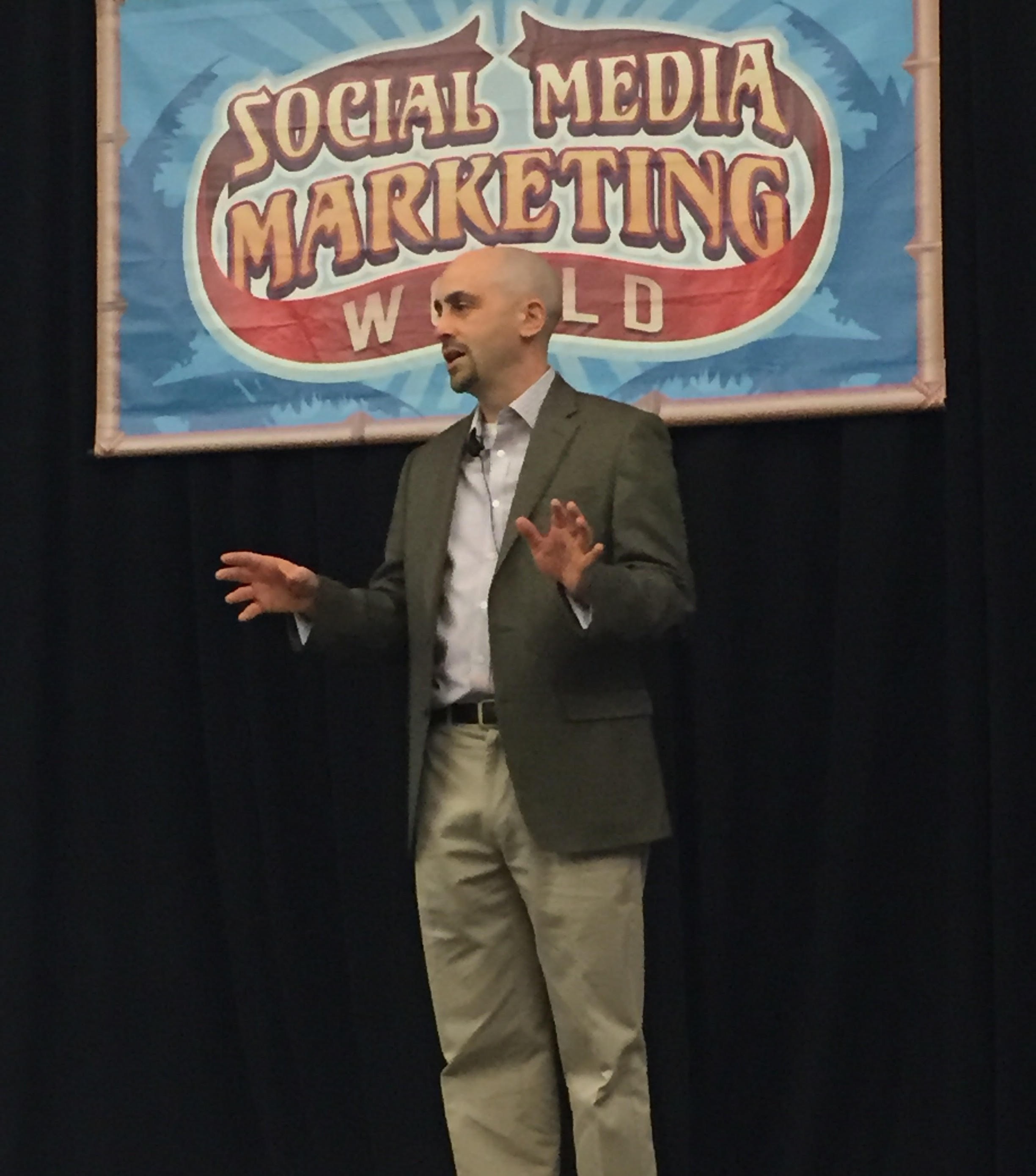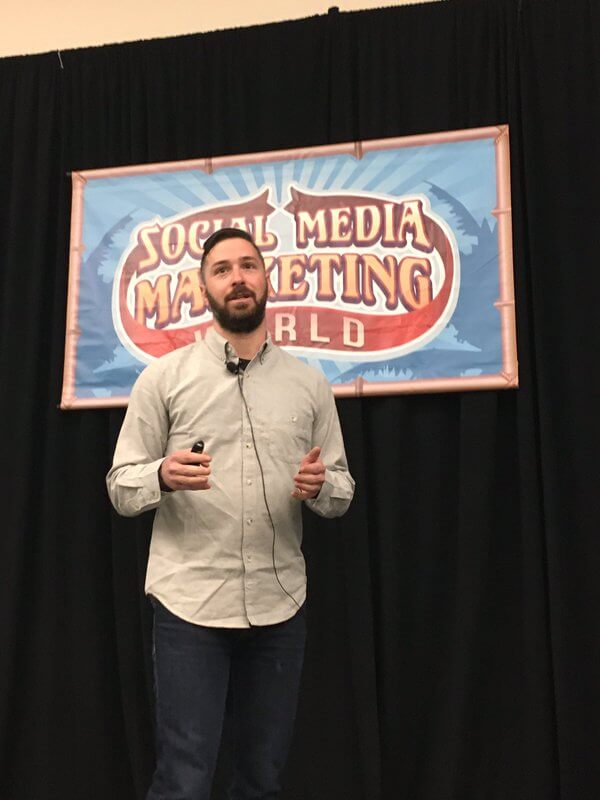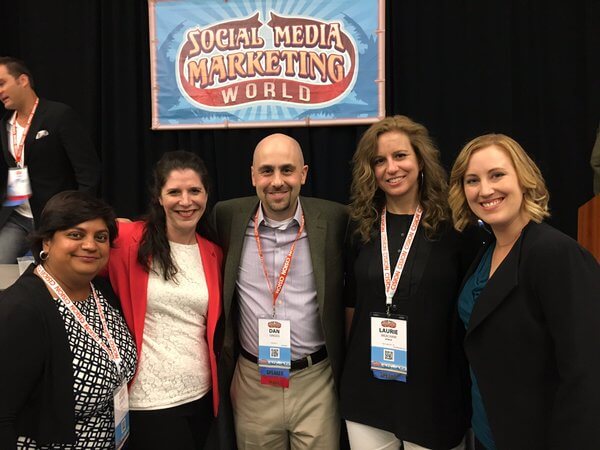For the first time in its now four-year history, Social Media Marketing World introduced an entire track at its popular conference dedicated to Customer Service.
Consisting of four unique individual sessions and two dynamic panel discussions, the Social Care Track delivered on its promise to sharpen social customer service skills and convince social media marketers that great service is critical to their success, too.

The inimitable Jay Baer kicked off the track with a presentation featuring research from his new book, Hug Your Haters. Among Baer’s most important findings:

So what are brands to do? The first step, said Baer, is to embrace complaints. This may seem counterintuitive, because company executives often look to hide customer complaints, but there is much to learn from complaints. “Haters are your most important customers, but we treat them like our least important customers,” said Baer.
Responding to complaints on social media is “the most important thing,” Baer said, a fact that is confirmed by Twitter’s own research which found that customers’ willingness to pay more to a brand increased after a customer service response on Twitter. Baer’s study found that answering customer service complaints increases customer advocacy by 25%, while not answering decreases it by a whopping 45%. This may be because most social media complainers are looking for “group empathy” and not an answer, so responding “blows their mind”.
Speed, in the form of response time, is also important, but Baer warns that companies should not “trade empathy for speed”. And don’t forget that “the financial benefits of social media customer service are only realized if you can actually solve problems.”
Jay’s additional tips:
If you are struggling with social media customer service, Baer added, it may be because your company hasn’t yet mastered customer service in other channels such as telephone and email.

Next came my presentation, entitled “How to Create a World-Class Social Care Program: 8 Building Blocks”. If companies exceed their customers’ expectations, they make them happy and more willing to share in social media. Likewise, when expectations are missed, the resulting negative emotions also increase willingness to share. This is why social media professionals – whether in marketing or customer service – need to have an understanding of the entire customer experience.
The 8 Social Care Building Blocks include:
Social Care Philosophy: This includes your beliefs on why you’re doing it and its impact to your business/stakeholders,plus the guiding principles that will enable your social care strategy
Technology Selection: The backbone that allows you to effectively scale social care efforts. Your program will only ever be as good as your technology allows you to be.
Team Selection & Operationalizing: Choosing the right front-line people and setting up the structure to successfully scale.
Training: Educating the team on the business, philosophy, technology, best practices, and social media channels.
Process: The steps which enable you to deliver superior customer service and business results, using your philosophy, technology & people. It should be “enough to stay safe, but not too much to slow you down”.
Reporting: Identifying the appropriate KPIs for your company and senior management.
Integration with the Core Business: a.k.a., “Internal Integration,” this is ensuring the business hears the voice of the customer and can use social care as a feedback loop for product development.
Integration with CRM: a.k.a., “External integration,” this is using voice of the customer to influence that customer’s future experiences with the brand. It’s about remembering previous conversations/requests and addressing them in the future without the customer having to ask again.
The two major social media channels for customer service then got to present their strategies and innovations for making their platforms the #1 choice of consumers looking for service from brands.
Jeff Lesser, Product Marketer at Twitter, noted that what makes Twitter unique for customer service is that “it’s public, conversational, real-time, and distributed”. He provided some fascinating stats about customer service on Twitter, including:

Despite these numbers, nearly 70% of technology consumers do not receive a response, Lesser said, but those who do are 84% more favorable to brand. He added that there is a high correlation between personalization in Twitter customer service and willingness to recommend to a friend.
Twitter has recently improved its customer service offering with the ability to add special links to direct message (rather than constantly telling people to do so) and a survey mechanism to track customer satisfaction scores.
Lesser’s advice to brands practicing customer service on Twitter:

Bryan Hurren, head of Messenger Partnerships for Facebook, noted that The Social Network’s advantage for customer service is that it’s “instant, interactive, proactive, and personal”. After engaging with a business via Facebook Messenger, he said, customers say it’s their favorite customer service channel.
Hurren demonstrated new functionality that allows companies to connect a website purchase to a Facebook Messenger account via a simple JavaScript plugin. Brands can also now customize the Messenger experience with welcome messages and other options, he said.
Next, Hurren walked the audience through the new Messenger Bots experience, which allows for automated assistance. The Bot “starts off automated but can instantly connect to a live agent on Messenger” when needed, Hurren said. Facebook has also enabled search for Messenger Bots to make it easier for customers to find the brands they want to talk to, he added.
Finally, Hurren demonstrated how companies can pass a customer’s phone number (with their permission, presumably) to Facebook so the social media giant can match it against its database and connect to the person’s account. Then a retailer, for example, could send the customer updates on a shipment via Messenger.
Hurren’s takeaways about Facebook’s approach to social media customer service:
A fantastic panel of experts showed the audience “How to Manage Online Reviews & Grow Your Business” – a key topic after Jay Baer had earlier shown that 55% of all online complaints occur on review sites.
The panel – moderated by Martin Shervington and featuring Casual Fridays Founder & CEO Tyler Anderson, Manipurated author and Convince & Convert strategist Daniel Lemin, Immigration lawyer Jacob Sapochnick, and Head of Social Media for Green Flash Beer Kari Embree – covered Yelp, Trip Advisor, Google, and even the Untappd app.

Marketing professionals “unfairly make [Yelp] a customer service scapegoat,” said Lemin, adding that a bad review is “a marketing opportunity but only if you answer it”. Don’t know if or where your customers are leaving reviews? Ask them, Lemin advises.
Sapochnick added that Google reviews are the most important for a service business because of the SEO impact.
Anderson suggested four steps for dealing with negative reviews:
And Embree further advised that a human touch is critical to success in responding to reviews. “When you’ve had a really great customer experience it’s often because someone acknowledged you’re a person and not just a follower number or a line on a spreadsheet,” she said.
The final session in the Social Care Track was a panel discussion entitled, “Case Studies from Brands Excelling at Social Customer Service”. It featured an all-female cast including Kriti Kapoor from HP, Laurie Meacham from JetBlue, Jessica Mack from OtterBox, and Whitney Drake from General Motors. All were previous guests on the Focus on Customer Service Podcast hosted by me and Dan Moriarty.

“Good social customer service creates differentiation at scale,” Kapoor told the audience. And indeed, HP has achieved this with more than 100,000 social inquiries handled every month.
Answering a question about KPI’s, Meacham shared that JetBlue’s target response time is 8 minutes, but they are currently averaging an astounding 5 ½ minutes. They hire from within, looking for agents who want to help others and who have strong internal networks to lean on for answers.
Drake said GM has a similar philosophy for hiring social care agents: “We want problem solvers and people who are interested in our product,” she said. “They can’t stop at the first response. They need to be able to see it through to the end.”
OtterBox’s Mack talked about using social listening for product development ideas, and integrating live video for proactive product demonstrations and “unboxing” events.
Kapoor finished the panel and the Social Care Track with excellent advice for anyone in the customer service business: “Leave no customer behind,” she said. “Everyone matters.”